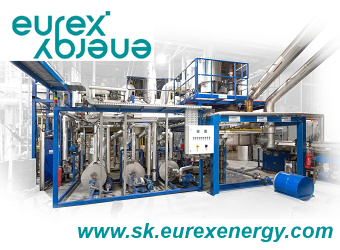Prospects for the Central European polymer market in 2024
What was 2023 like? In fact, it could have been worse. Fortunately, energy prices normalized, inflation began to decrease everywhere in Europe, and the economic downturn was not significant either. But the uncertainty and fear of recession remained with us. The general economic situation is slowly improving, falling inflation will probably be followed by interest rate cuts in the Euro zone and outside the zone as well.
However, the war stayed with us, and now not only in Ukraine, but also in the Middle East. The risk of attacks affecting transport routes and disruptions affecting supply routes is increasing.
However, focusing only on the European economy, the biggest challenge of 2024 is whether European industrial production and consumption can be put back on a growth path? European polymer production is basically export-oriented; in 2021, we produced 57 million tons of polymer in Europe and only consumed 50 million tons. However, the situation is changing, the export of European polymers is almost impossible due to the relatively high energy and feedstock prices. Just for comparison, North American chemical manufacturing costs are nearly 55% lower than European ones. Added to all this is the almost 6% decline experienced by European industry in 2023.
We expect oversupply, selling pressure and cautious buyers in 2024 as well. Converters will operate with smaller polymer stocks than usual in 2024 as well. They seek to maintain purchasing flexibility while avoiding risk. This is also supported by the fact that at the end of 2023, polymer manufacturers were able to sign fewer contracts than they had planned. 2024 will be a spot year. Which means both volatility and changing customer purchasing habits.
The volatility will not be comparable to that experienced in 2021, we do not expect sharp monthly price increases of several hundred euros. This could only be deviated from if the Strait of Hormuz or the Suez Canal were closed. In this case, we should expect a significant increase in the price of oil and other "feedstock".
The most likely scenario, which is true for all the polymers we examined, is that in 2024, prices will change in relatively short price waves of 1-3 months, in a relatively narrow band, according to the logic below. When prices are low, as is the case now when imports stop, many European manufacturers also reduce their production and availability drops. This gives European manufacturers the opportunity to raise prices. However, due to weak demand, price increases cannot be too steep. Moreover, the price increase is immediately offset by the fact that the higher price level immediately stimulates imports and European production. Thus, a full price wave from the bottom to the top cannot be larger than €3-400, but the most likely wave is €2-300. The duration of the price wave largely depends on the duration of sea transport and the restart of European factories. The first wave of prices will probably roll through the markets between the beginning of February and the end of April. At that time, a "high-price" period is expected, after which we expect a permanently "low-price" period between mid-May and mid-August. Then the autumn can bring a recovery, possibly a more permanent increase in price levels. At the beginning of January, efforts to raise prices are already visible, and there was even a Central European manufacturer that already raised prices at the end of December. The successful January price increase is hindered by prolonged vacations, most companies only start production in the week starting January 8. However, if not in January, a successful price increase of 30-50 euros can certainly be expected in February. This can increase demand and slightly raise prices as early as in the second half of January. Purchasing decisions in 2024 are likely to shift to the middle of the months when converters have a clearer view of the market situation and prices.
The European market will operate in a kind of stop and go mode in 2024. This means that larger polymer manufacturers will schedule maintenance at different sites, thus limiting their emissions at the company group level. The challenge is not small, in order for the European polymer market to be balanced, the total polymer production must be reduced by almost 20% in 2024 compared to 2021. It is not yet clear what single-site polymer producers, especially those integrated with a refinery, can do? They will probably continue to produce except for minor maintenance. Unless the chemical feedstock or monomer can be utilized in another way, even as an energy carrier, as we experienced at the end of 2023.
On the supply map of Central Europe, we expect some major changes in the supply structure. Western European manufacturers are likely to establish a greater presence in our region, as this market has greater growth potential. Some large European manufacturers want to create new logistics hubs in Central Europe in 2024. But big international traders also have similar plans. The increasing supply in Western Europe is counteracted by the increase in freight and road fees throughout Europe, especially in Germany.
Due to the rising cost of road transport, the geographical radius that can be served efficiently and profitably decreases, and the value of locally produced polymers is increasing. That is why – contrary to Western European trends – PP and HDPE capacity expansions are expected in the South Central European region (SCE) in the coming years.
In 2024, we are already expecting significant progress this year in recycling. Already towards the end of 2023, it was apparent that the demand for good and stable quality recycled materials had increased, thanks to the approaching deadlines of 2025 and 2030. Major polymer manufacturers are trying to enter the recycling business by acquiring regional recycling companies. This trend, industry concentration, will continue in 2024, while the regional availability of high-quality waste remains limited. Also, due to the high freight charges, the possibilities for purchasing imported waste will continue to narrow. All of this is expected to mean a noticeable price increase, first on the recycled polyethylene market, then on the polypropylene and polystyrene market as well. For now, the question is whether the widespread use of regranulates will reduce the demand for virgin polymer? In Central Europe, virgin-recycling compounds are not expected to spread, or they are expected to be more widespread, and they are hybrid solutions directly from polymer manufacturers. These can ensure stable and continuous, repeatable quality for plastic conversion. For the independent recyclers, the small South Central European polymer producers can be a hope, who struggle with profitability problems due to their high specific production costs, but in cooperation with the recyclers they can produce high-quality virgin-recycling compounds or special virgin polymers for the recyclers themselves.
In terms of economic processes, we are facing a difficult first half of 2024 and a less difficult second half. Due to the expected continuously decreasing inflation and interest rates, the economy will slowly gain strength and growth may begin, which will not be comparable to previous years, as energy and feedstock prices will remain high. In the second half of the year, the construction industry will probably also start to grow. We will probably be able to avoid recession at the European level in 2024, but real prosperity will still have to wait. This year will be characterized by a kind of consolidation, many smaller converters will merge into larger companies or just disappear permanently.
Looking at the difficulties ahead, pessimism seems more realistic, but let's be optimistic! Central Europe will be the European region showing the fastest growth, and this will probably happen as early as this year.
- autor:
- László Bűdy, myCEPPI























